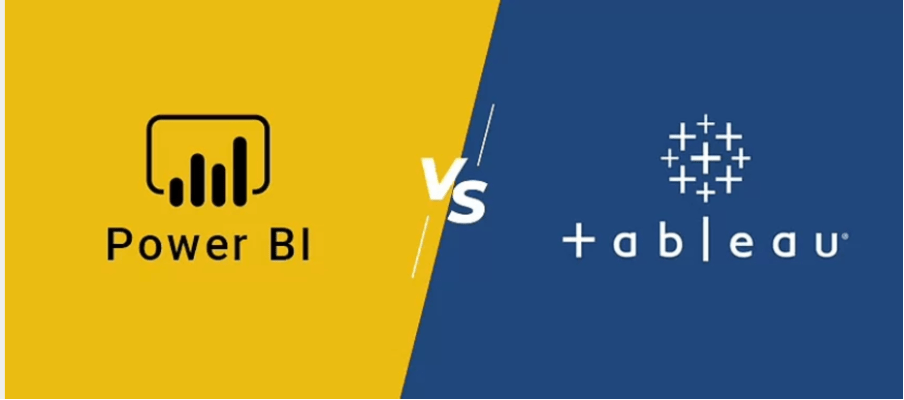Data Visualization is an important part of Data Analytics. Organizations use Data visualization tools to track and monitor business performance and KPIs (Key Performance Indicators) in a dashboard or a portal. A chart needs to be presented in a way that is easy to understand by clients and users, so it is necessary to have simple tools that can be used to organise the data and also present more effectively. Data Visualisation tools or Business Intelligence tools like Tableau or Microsoft PowerBI helps to create and report business metrics in the form of charts and tables from various data sources. Let us see the pros and cons of using these 2 tools.
Power BI Desktop
User Interface: In terms of the interface, it is crisp and well organised. In the left pane, you will find the most important elements arranged side-by-side, which are filters, visualisations, and fields.
Tableau Public
User interface: Tableau provides detailed views of data, and data can be organised automatically into Measures and Dimensions.
Comparison of the two data visualization tools based on our usage :
| Power BI Desktop | Tableau Public | |
| Make | Developed and owned by Microsoft Corp. in 2013 | Developed by Tableau in 2003 and acquired by Salesforce Inc. in 2021 |
| Versions | Power BI currently has three versions:
1) Microsoft Power BI Free / Desktop 2) Microsoft Power BI Pro 3) Microsoft Power BI Premium |
The Tableau Product Suite consists of
1) Tableau Desktop (free 15 days trial) 2) Tableau Public ( free for lifetime) 3) Tableau Online 4) Tableau Server and Tableau Reader |
| OS | PowerBI works on Windows Operating System. | Tableau works on different OS -Windows, Linux, Mac. |
| Data Preparation | Data preparation, cleaning and loading can be done using PowerQuery editor which comes with PowerBI desktop. | A separate module called Tableau Data Prep is needed for data loading, preparation and cleaning. |
| File extension | .pbix is a document created by Power BI desktop. | .twbx is a document created by Tableau. |
| Performance | It can handle a limited amount of data | Good performance with a large amount of data |
| Importing data | Data can be fetched from 99+ Data sources and can also get data from a live web page, Linkedin, , and FB. | Data can be imported from over 77+ data sources in Tableau. |
Organizations are using various visualization tools and Tableau and PowerBI are being used by different companies. Microsoft Corp. is promoting PowerBI aggressively and business users are finding it easier to create charts and tables in PowerBI. Microsoft Power BI is a business intelligence tool that lets you visualize and analyze data https://www.microsoft.com/en-us/power-platform/products/power-bi. It’s part of the Microsoft Power Platform, which combines tools for data analysis, app development, and workflow automation.
Power BI excels in data modeling, letting you connect and organize data from various sources. This creates a single source of truth for your reports. These reports can then be interactive and visually compelling, allowing you to analyze trends and uncover insights from your data. The use of Power BI as a business intelligence (BI) tool has increased in recent years, particularly among companies already invested in the Microsoft technology stack. This surge in adoption can be attributed to Power BI’s seamless integration with other Microsoft products, making it a natural fit for organizations seeking a unified data analysis experience.

